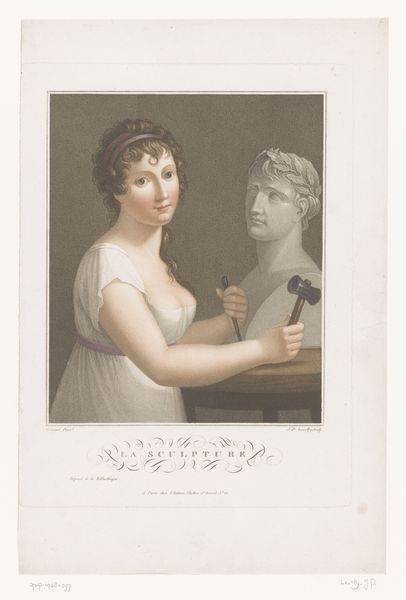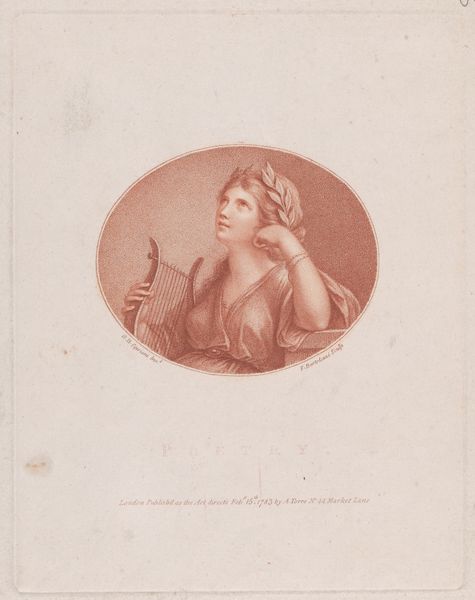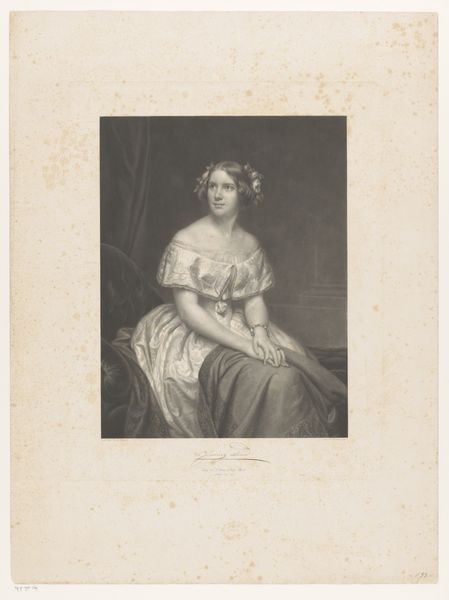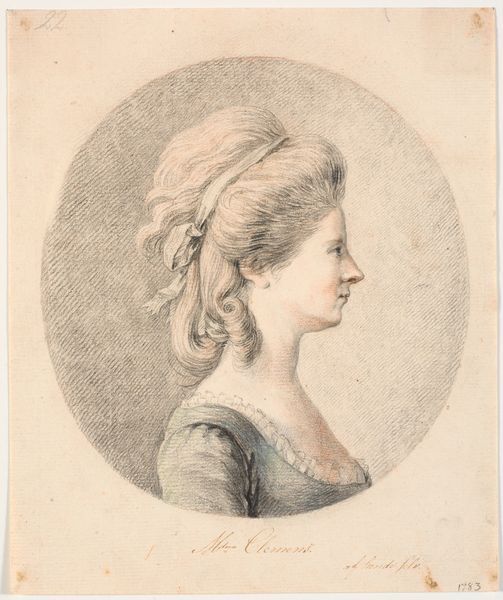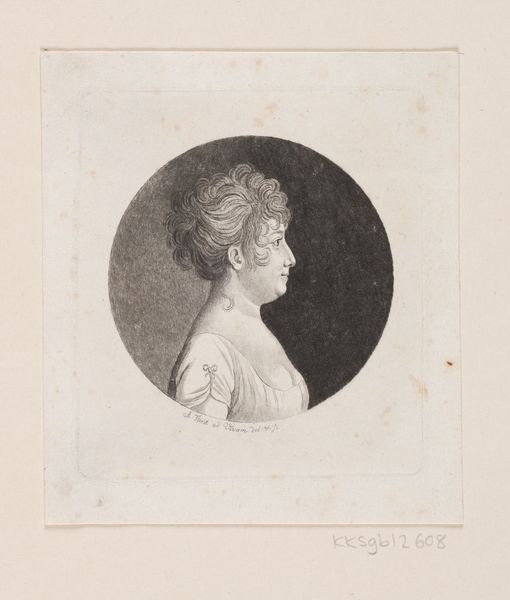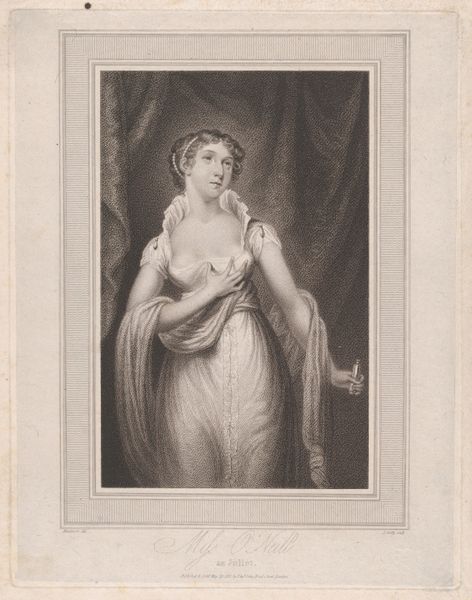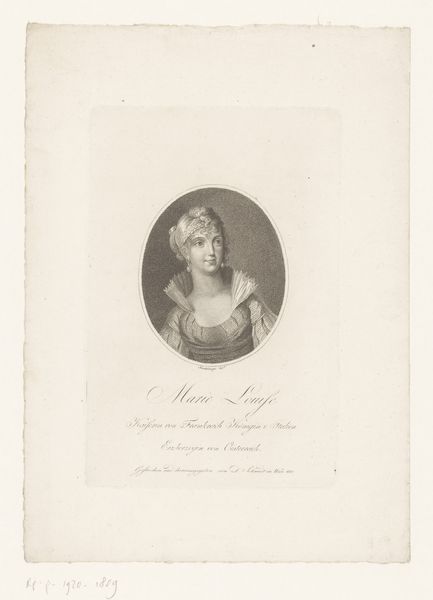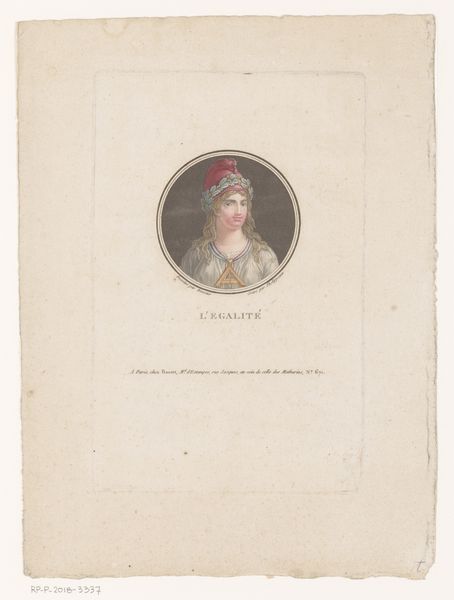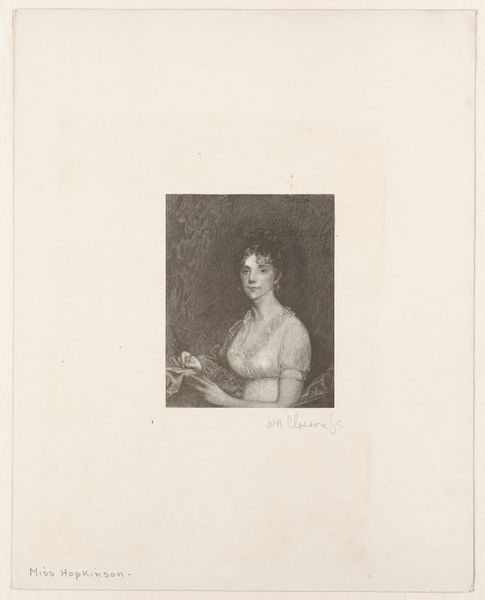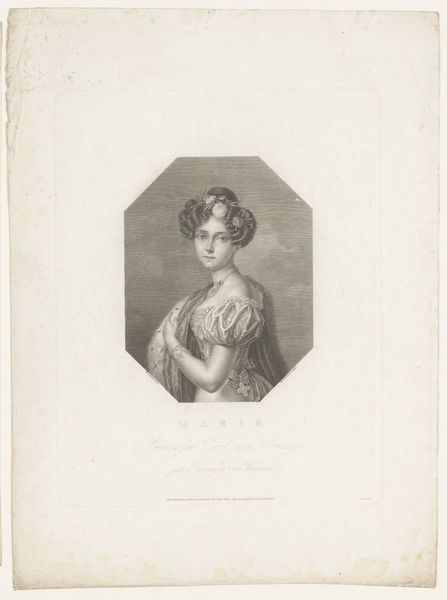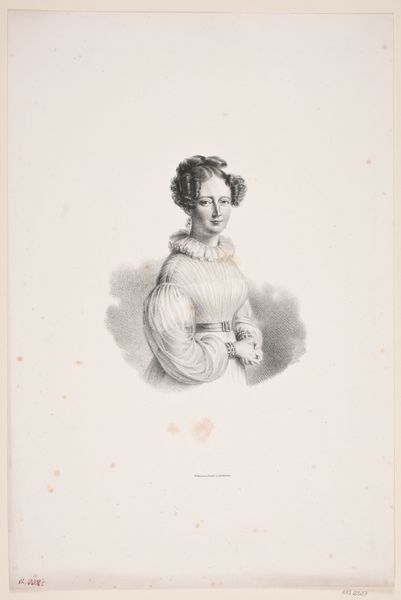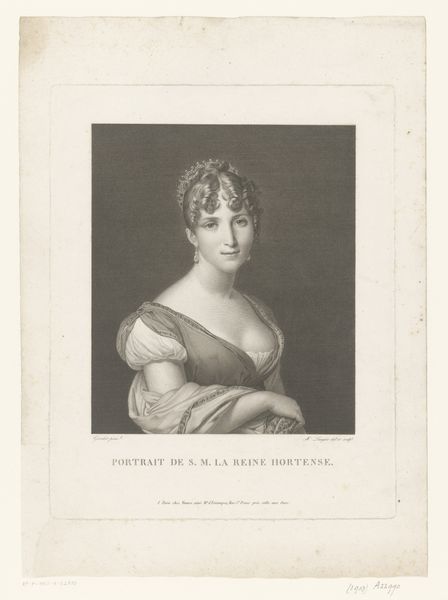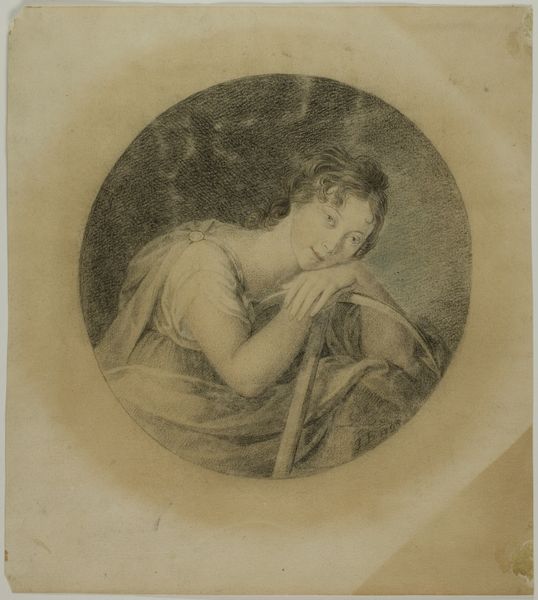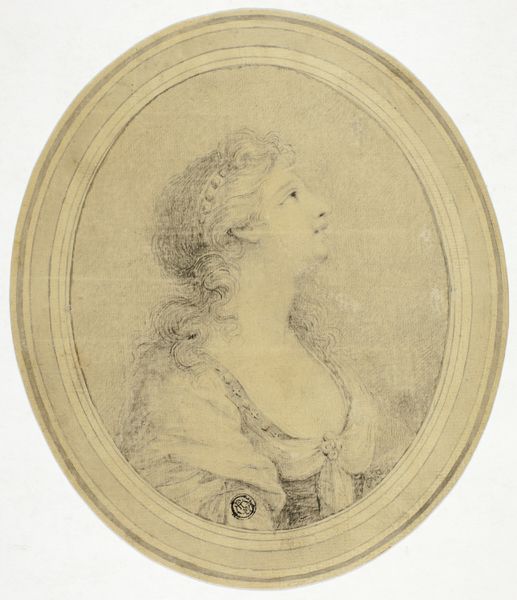
print, engraving
#
portrait
#
neoclacissism
#
allegory
# print
#
history-painting
#
academic-art
#
engraving
Dimensions: height 359 mm, width 268 mm
Copyright: Rijks Museum: Open Domain
Editor: So, this is "Schilderkunst" by Jacques Philippe Levilly, from around 1780 to 1806. It’s a print, an engraving. The figure is painting a portrait – it feels almost staged, a bit romantic. What do you see in this piece? Curator: I see the potent symbols of aspiration. The allegorical figure of Painting, or "La Peinture," is herself creating an image of power – a royal portrait, we can assume. This isn't just art, it's art legitimizing authority. The symbols resonate through history; consider the scepter faintly visible on the easel, it evokes control and inherited right. It begs the question, doesn’t it, of whose authority painting serves? Editor: So, the act of painting is itself a statement? Almost like propaganda? Curator: Precisely! The symbolism tells us this work likely operated within a very specific socio-political framework. Notice how 'La Peinture' is idealized, almost a goddess, and the soft pastels evoke elegance, reflecting a classical revival, don't they? Do you think the subtle tones suggest the artist had some qualms, perhaps a gentle dissent in representing power so ideally? Editor: I didn't consider that. I was focused on the classical style. That suggestion adds a layer of complexity. So the colours used and the style chosen subtly shift the artwork's entire purpose. Curator: The seemingly benign colors are also symbolic and hold power, as they convey subtle cultural messages and aesthetic preferences within Neoclassicism, reflecting back on political ideals during the time. These prints often served didactic functions – subtly guiding the viewer to embrace established order. Editor: I see. It’s fascinating how even in something seemingly simple, there’s so much more when you look at the symbolic language. Curator: Yes! Even the ‘innocent’ brush strokes are deliberate in shaping our understanding of cultural memory, the emotional investment in this narrative of power. The painting reveals that art serves as a conduit of ideological persuasion and aesthetic elevation, forever bound together in society.
Comments
No comments
Be the first to comment and join the conversation on the ultimate creative platform.
